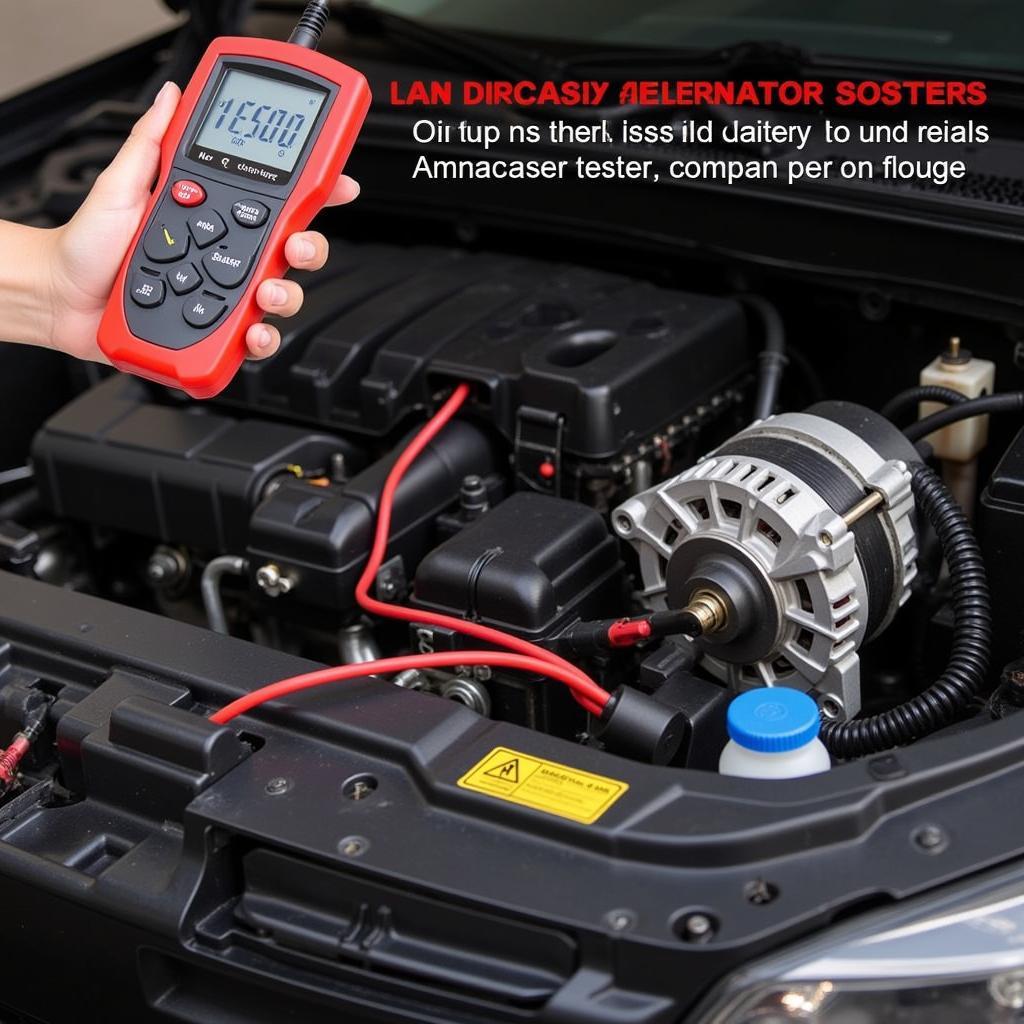If you’re constantly jumping your car or replacing batteries, you’re not alone. The dreaded “my car keeps killing batteries” scenario is a common complaint among car owners. This frustrating problem can stem from a variety of issues, from simple parasitic drains to more complex alternator or electrical system malfunctions. This guide will walk you through common causes, diagnostic steps, and solutions for a car that keeps draining its battery.
Similar to car keeps killing batteries, many battery issues arise from seemingly invisible problems. Let’s delve into the possible reasons why your car is constantly draining its power source.
Common Culprits Behind a Dead Battery
Several factors can contribute to a constantly drained car battery. Understanding these culprits is the first step toward a permanent solution.
Parasitic Drains: The Silent Killers
Parasitic drains are small electrical currents that continue to draw power even when the car is off. These drains can be caused by faulty wiring, malfunctioning components (like interior lights, radios, or even alarm systems), or aftermarket accessories improperly installed.
Faulty Alternator: The Powerhouse Problem
The alternator is responsible for recharging the battery while the engine is running. A failing alternator won’t adequately charge the battery, leading to a gradual drain and eventually a dead battery.
Old or Damaged Battery: The Usual Suspect
Sometimes, the simplest explanation is the correct one. An old or damaged battery may no longer hold a charge effectively, leading to frequent jumps and eventual failure. Extreme temperatures can also significantly impact battery life.
Corroded Battery Terminals: The Connection Conundrum
Corroded battery terminals can disrupt the flow of electricity between the battery and the car’s electrical system. This can prevent the alternator from charging the battery correctly and lead to starting issues.
Diagnosing the Battery Drain
Pinpointing the exact cause of a battery drain can require some detective work. Here’s a step-by-step approach to diagnose the issue:
- Check the battery: Begin by inspecting the battery for any physical damage, cracks, or leaks. Also, check the terminals for corrosion.
- Test the battery: Use a multimeter to test the battery’s voltage. A fully charged battery should read around 12.6 volts.
- Perform a parasitic draw test: This test involves disconnecting the negative battery cable and using a multimeter to measure the current flow. A high reading indicates a parasitic drain.
- Test the alternator: A simple test involves starting the car and checking the battery voltage with the engine running. It should read around 14 volts.
 Mechanic testing a car alternator with a specialized tool.
Mechanic testing a car alternator with a specialized tool.
Solutions and Preventive Measures
Once you’ve identified the cause, you can implement the appropriate solution.
Addressing Parasitic Drains
This often involves systematically disconnecting fuses and relays to isolate the circuit causing the drain. Repairing or replacing faulty components or rewiring is usually necessary.
Replacing a Faulty Alternator
If the alternator is the culprit, replacement is the most effective solution. Ensure you choose a quality replacement alternator that meets your car’s specifications.
Battery Replacement or Maintenance
If the battery is old or damaged, replace it with a new one. Regularly cleaning the battery terminals can prevent corrosion and ensure a good connection.
Key Fob Batteries and Their Impact
While not always the primary culprit, a dying key fob battery can sometimes contribute to battery drain, especially in newer vehicles. This can be particularly relevant if you’re dealing with a situation similar to needing a battery for key fob dodge durango.
Conclusion
A car that keeps killing batteries can be a frustrating problem. However, by understanding the common causes and utilizing the diagnostic steps outlined in this guide, you can effectively troubleshoot the issue and implement the appropriate solution. Regular maintenance, including checking your battery and alternator, can prevent future occurrences and ensure your car starts reliably every time. Like with a cold kill car battery, sometimes the issue is less obvious. Don’t hesitate to seek professional help if you’re unable to diagnose or fix the problem yourself.

